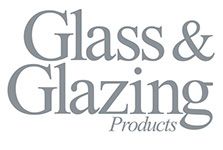
With energy costs still spiralling, AluK’s decision to go down the U-values rather than window energy ratings (WERs) approach in responding to Part L looks even more like the right one, for both homeowners and the environment. As someone who has worked in the glass industry for 16 years before I joined AluK, I’ve probably got a better understanding than many of what the different approaches actually mean for homeowners and why it makes more sense for homeowners to choose a U-value rating rather than a WER score if they want to make real savings on their energy bills.
In very simple terms, the U-value calculation method that AluK has chosen uses a lower-U-value double-glazed unit (typically 1.0 centre pane) alongside our new thermally enhanced profiles to achieve the different 1.2, 1.4 and 1.6 U-value limits now required in new-build and refurbishment projects. Effectively, that lower U-value glass limits the amount of solar gain coming into the home and lets as little energy out as possible.
By contrast, the WERs approach uses higher-U-value glass (typically 1.2 centre pane) which allows for a higher level of solar gain when the sun is shining, while accepting that more of the expensive energy from inside the home will be lost. Of course, the solar gain is standardised for the calculation, so it doesn’t take into account all those days when there isn’t any sunshine or the position of the windows and the orientation of the house
On a cloudy day then, a north-facing aluminium window simulated to achieve the WER B or C rating, which in theory is equivalent to 1.4 or 1.6 in U-values, is very likely to be doing much less to conserve the heat in the home than one which has been simulated to the actual U-values. I think there is a widespread misconception across the market that U-values and WERs are a like-for-like calculation. But, while they use the same parameters in terms of solar gain vs heat insulation, they do not actually deliver the same results. That’s a powerful message for AluK fabricators and installers to take to all those customers whose primary driver in fitting new windows and doors is a desire to reduce their energy bills.
It certainly explains why we have seen a surge in enquiries since the June 2022 Part L deadline for our new, thermally enhanced C70S 70mm window system. The system achieves impressive U-values of 1.4 with a 1.0 U-value centre pane double-glazed unit – and no requirement for triple glazing.
It’s obviously also a greener message too and very much in line with AluK’s commitment to reducing the environmental impact of our products as much as we can. Our stated aim has never been to fudge compliance on Part L but rather to lead the way towards the 2025 Future Homes Standard, as the aluminium sector adapts to ever tougher thermal performance limits. You could say AluK is walking the talk, and not just talking.
Our U-value measurement approach doesn’t just help in winning business in the retail sector though. It is now the only measurement accepted in the new-build residential market, so AluK customers can relax knowing that they have access to windows and doors that enable them to comply right across the board.
AluK has an extensive online resource giving customers all the information they need about Part L. There are also two downloadable guides on there for installers: one covering the rules in England and one covering the slightly different rules in Wales.
Our sales and projects teams can give advice on choosing the right glass to pair with our new thermally enhanced profiles. In some installations, a 1.0-U-value double-glazed unit will be the only viable route to Part L compliance but there may be occasions where a different specification will still comply.
Russ Cusworth
National sales manager, AluK



